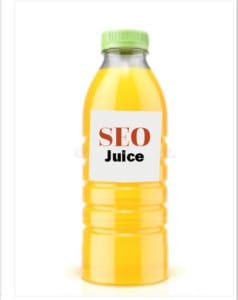Internal links are one of the most complicated yet important things you can do for your keyword ranking and credibility. Before going into strategy specifics, let’s dive first into the basics: the purpose of an internal link is to connect one page of a website to a different page on the same website.
 But why are internal links important for SEO? What’s the best internal link building strategy?
But why are internal links important for SEO? What’s the best internal link building strategy?
1. Internal links facilitate the user experience
2. They build site hierarchy
3. Ultimately, internal links increase your site ranking and important for site optimization
The focus of this article will be #3 – how to use internal links for SEO.
1. Link “Follow”
In the world of Google, backlinks from social media don’t “count” directly for SEO content marketing. Plus, that kind of ranking can take forever. Social network links are “no-followed” in Google which means they don’t satisfy the criteria for “link juice” without SEO value.
A recent Search Engine Watch article states, “instead when social media appears to be causing a boost in ranking, this is what’s happening: Content that gets seen a lot is more likely to get linked to from other websites. Those additional backlinks are the cause of the better rankings. The improved rankings also lead to increased social media activity.”
Bottom line – promoting content on social media can be good for getting the word out about your content but shouldn’t be exclusively relied upon to build ranking and authority.
2. Link to pages that provide reader value
The best internal link building strategy for increased keyword rankings and credibility is to up your SEO content writing. Internal links need constant webpages. Lots of them, which means increased opportunities to link blog articles and other forms of content on your website.
According to Barry Schwartz, editor of Search Engine Land, “in the contest between content and links, it’s now a settled fact that content is more important.”
Bottom line – avoid internal linking building strategies for the sake of promoting. Be of real service to your reader. If you are writing rich SEO content, your customer will take the next step.
3. Link anchor texts with keywords and related words
As the visible, clickable text in a hyperlink, the internal link of an anchor text has the strongest “SEO juice” that can help certain webpages of your site rank even higher in the search engines.
juice” that can help certain webpages of your site rank even higher in the search engines.
Google uses keywords to determine a site’s relevance but also derives the meaning of a page from the text that other pages are link to it. This is the reason why a page can rank well for a matched keyword or keyphrase because of the anchor text of a reliable internal link to that page.
Choose your anchor texts wisely: Let’s say you had a page on your site with the keyword [donuts] and another person creates an anchor text with the words [[cookies with holes in them]]. Google will then pick up that donuts have holes and the next thing you know, there is a relevant keyword for [baked goods with holes]. Use this knowledge to your advantage by choosing your anchor text wisely both with backlinks and also with internal linking.
4. Use internal links intentionally – Linking for the sake of linking is never a good strategy. You might easily turn off a potential prospect or customer when s/he lands on your page only to find that half of your page’s content is swimming in links. Overly distracting your readers with promotional or salesy links can easily turn off your customer. This idea of intentionality also connects to point #5 – linking with relevance.
Linking with intention also has to do with limiting the number of internal links on a page. How many links is enough? There’s no hard and fast rule. A good rule of thumb: For a 1,500-2,000 word content-rich article, including 10-15 relevant internal links is reasonable providing these links will increase the user experience.

Photo 80649591 / Internal Links © One Photo | Dreamstime.com
5. Use internal links with relevance. Don’t link to random home pages or a “contact us” page – that will only create an irrelevant internal link experience. Most content marketers first starting out often link to the contact us page, but since it’s typically one of the top-level pages of a site anyhow, this kind of thinking should be avoided.
Creating an effective internal link building strategy that gets your site noticed in the search engines takes time to build. But it is one of the most important SEO strategies you can do for your business and your online platform.




Connect with Dorit